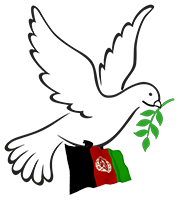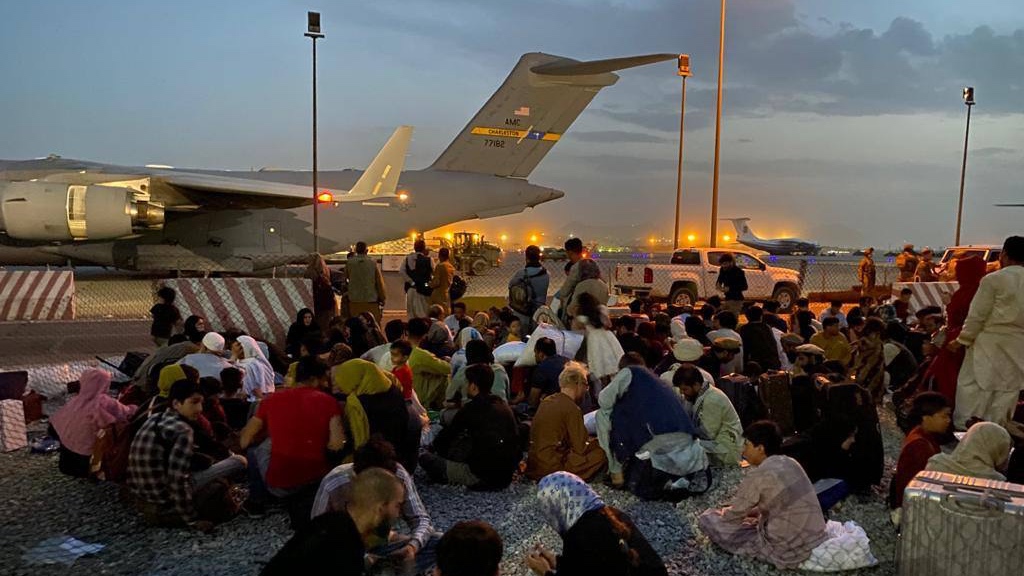Islamabad, Pakistan – When Pakistan’s Deputy Prime Minister and Foreign Minister Ishaq Dar landed in Kabul on April 19 for a daylong visit, it marked the first major trip by a senior Pakistani official to Afghanistan since February 2023.
Dar’s visit came just days after senior military and intelligence officials from both countries had met in Kabul for the first time since January 2024.
These meetings follow months of strained relations between the neighbours amid frequent border skirmishes, Pakistan’s decision to expel Afghan refugees, and repeated border closures that have disrupted business and trade.
Dar’s trip, say analysts, signals a willingness from both sides to reset ties through diplomacy.
According to Pakistan’s Ministry of Foreign Affairs, Dar met Afghanistan’s interim foreign minister, Amir Khan Muttaqi. The two leaders held discussions on “security, trade, transit, connectivity, and people-to-people contacts”.
The statement from the Afghan Foreign Ministry, however, did not mention security concerns and focused on issues such as “situation of Afghan refugees, political relations, economic cooperation, trade, transit, large-scale joint projects, and other matters of mutual interest.”
At a news conference in Kabul following his meeting with Muttaqi, Dar said Pakistan has invited Afghan officials to Islamabad and called for open communication channels to resolve disputes between the two countries.
“We have requested our hosts that we have to work together for the progress, betterment and peace and security of the region. For that, neither will we allow anyone to use our soil to conduct illicit activities in Afghanistan, nor will you allow anyone to use your soil,” Dar said.
Security concerns after 2021
Since the Taliban took control of Afghanistan in August 2021 after the United States withdrew its troops, Pakistan has witnessed a sharp increase in violent attacks, particularly in the northwestern province of Khyber Pakhtunkhwa and the southwestern province of Balochistan, both of which share borders with Afghanistan.
Islamabad has repeatedly alleged that Afghan soil is being used by armed groups, especially the Pakistan Taliban, known by the acronym TTP, to launch attacks across the porous border.
Pakistan Taliban, founded in 2007, is ideologically aligned with the Taliban in Afghanistan but operates independently. The Taliban has repeatedly rejected allegations that it allows its soil to be used for attacks against Pakistan, and has consistently denied any ties with the TTP.
Data from the Pak Institute For Peace Studies, an Islamabad-based conflict research organisation, shows that Pakistan experienced 521 attacks in 2024, a 70 percent increase from the previous year.
These incidents claimed 852 lives, a 23 percent rise, with 358 of those killed being law enforcement personnel. Most of the violence occurred in Khyber Pakhtunkhwa and Balochistan.
Once seen as a benefactor of the Taliban, Pakistan has cited the uptick in violence as the main reason for its crackdown on hundreds of thousands of Afghan refugees, many of whom have lived in the country for decades.
Pakistan has hosted millions of Afghan refugees since the Soviet invasion of Afghanistan in 1979, welcoming several waves of displaced people as conflict continued in the country.
Following the 9/11 attacks and the subsequent US invasion of Afghanistan, thousands of Afghans returned home. However, the Taliban’s dramatic return to power in August 2021 prompted another wave of displacement, with between 600,000 and 800,000 people seeking refuge in Pakistan.
Since the expulsion programme began in November 2023, nearly one million Afghan nationals have been forced to return, with the Pakistani government declaring that it would continue its repatriation drive.
Global rights organisations, as well as the Afghan government, have urged Pakistan to reconsider the decision and ensure the dignity of those being deported.
Revival of diplomatic ties?
Despite rising hostilities between the two countries, including Pakistani air attacks on Afghan soil in December that killed at least 46 people, analysts see Dar’s visit as “significant” and suggestive of a broader resumption of dialogue.
Iftikhar Firdous, co-founder of The Khorasan Diary, a portal that tracks regional security issues, pointed out that this was the highest-level visit from Pakistan to Kabul since former Prime Minister Imran Khan’s trip in November 2020.
“The visit by Dar included discussions on security, ease of business for traders, and continued conversations on cross-border issues,” Firdous told Al Jazeera.
The Islamabad-based analyst added that the recent meeting between military and intelligence officials indicates that backchannel efforts to resurrect diplomacy were under way even before Dar’s trip.
“It was not a start, but instead a culmination of the agenda to re-engage with Afghanistan and break the ice,” he said.
Amina Khan, director of the Centre for Afghanistan, Middle East and Africa at the Institute of Strategic Studies Islamabad (ISSI), said both sides appear to be looking for ways to accommodate each other’s concerns.
“For Pakistan, it is security, and for Kabul, it is trade. However, since both are intertwined, a comprehensive bilateral approach is needed. This trip appears to have initiated a dialogue. One will have to see if both sides can maintain the positive momentum,” she told Al Jazeera.
Khan added that Pakistan recognises the importance of Afghanistan to its own stability.
“Pakistan realises that, in order to achieve this, workable ties with Kabul are paramount, but at the same time it is pivotal for Kabul to address Pakistan’s security concerns emanating from the TTP,” she said.
A United Nations report [PDF] published in February concluded that the Taliban continued to provide logistical, operational and financial support to the TTP. It added that the armed group has set up new training centres in border regions near Pakistan.
In response, Zabihullah Mujahid, the Afghan government spokesperson, denied the allegation, calling it a “regular slander” against the country.
“The stance of the UN is misused. We call on the countries who are members of the UNSC but have good relations with Afghanistan to not allow the reputation of the organization to be harmed,” Mujahid said in February.
On the same page?
Khan of ISSI said the Taliban faces its own challenges while dealing with armed groups like the Pakistan Taliban.
“Pakistan understands the limitations of the Afghan Taliban in taking action against the TTP, who may very well join the ranks of so-called ISIS [ISIL] and take up arms against the government,” she said.
Meanwhile, the Taliban has stressed that the Afghan government is unhappy about the eviction of hundreds of thousands of Afghans by Pakistan.
Raising the issue of their forced repatriation in the meeting with Dar, Minister Muttaqi stressed the need for humane treatment and urged Pakistani authorities to protect the rights of Afghan nationals currently residing in Pakistan or returning from there.
The Pakistan Foreign Ministry statement, meanwhile, focused on the country’s security concerns.
“The Deputy Prime Minister emphasised the paramount importance of addressing all pertinent issues, particularly those related to security and border management, in order to fully realise the potential for regional trade and connectivity,” the ministry’s statement read.
Still, Khan, the analyst, said she believes that Dar’s visit has broken the ice. Now, the key will be to “remain engaged” and pursue a holistic approach to bilateral relations, she said.
“While security is a crucial aspect, it should not be the sole focus. Other aspects, such as diplomatic, economic, and cultural cooperation, must also be considered to build a balanced and sustainable partnership,” Khan said.

 Afghanistan Peace Campaign
Afghanistan Peace Campaign
